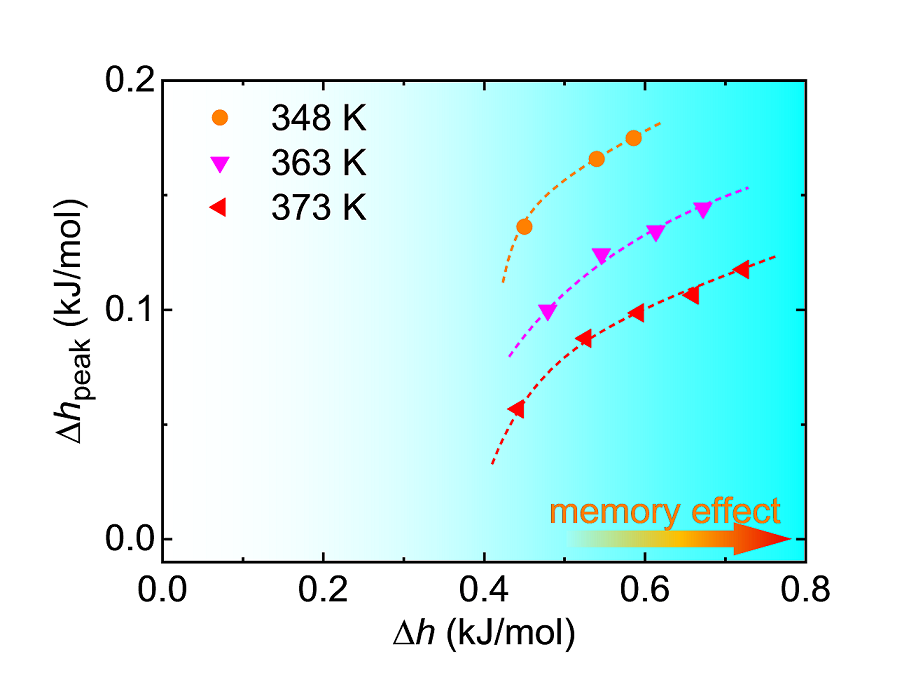Prof. Wang Junqiang’s team at the Ningbo Institute of Materials Technology and Engineering (NIMTE) of the Chinese Academy of Sciences (CAS), has revealed the key role of activation entropy in the memory effect of glasses, providing new understanding of the physical origin of the memory effect in glasses. The study was published in Physical Review Letters (Phys. Rev. Lett.).
Unlike the common ageing of glasses, the memory effect, which was observed by Kovacs in 1963, describes that the when a glass is annealed sequentially at two temperatures, i.e. first at low temperature and then at a higher temperature, the glass can “rejuvenate” during the second step annealing.
Such phenomenon has been observed in various materials and complex systems, and is generally explained in terms of heterogeneous dynamics with phenomenological models, but the universal physical mechanism of memory effect still remains an unsolved mystery.
To address this issue, the memory effect of a model metallic glass (MG) (Au49Cu26.9Ag5.5Pd2.3Si16.3) with good glass forming ability, and low glass transition temperature and liquidus temperature was studied, by virtue of a high-precision high-rate differential scanning calorimeter. The influence of the annealing temperature and the annealing time has been studied systematically.
According to the absolute reaction rate theory, the activation entropy S* during isothermal annealing is determined. The memory effect occurs only when the temperature jump moves the glass into a state with a larger value of activation entropy S*. No memory effect is observed if the jump occurs into a smaller S* state. This indicates that activation entropy S* plays a key role in triggering the memory effect in glasses.
The current study has provided a new perspective to account for the physical mechanism of the memory effect in glasses, and may promote the further research on the kinetic complexity in various disordered materials based on the proposed activation entropy S*.
This work was supported by the National Key R&D Program of China (No. 2018YFA0703604, 2018YFA0703602), National Natural Science Foundation of China (No. NSFC 51922102, 51771216, 51701230, 51827801), Zhejiang Provincial Natural Science Foundation of China (No. LR18E010002), Ningbo 2025 Science and Technology Innovation Project (No. 2019B10051), and the U.S. National Science Foundation through the University of Wisconsin Materials Research Science and Engineering Center (No. DMR-1720415).


Fig. The activation entropy S* influences the occurance of the memory effect in glasses
Contact
WANG Junqiang
Ningbo Institute of Materials Technology and Engineering
E-mail: jqwang@nimte.ac.cn

